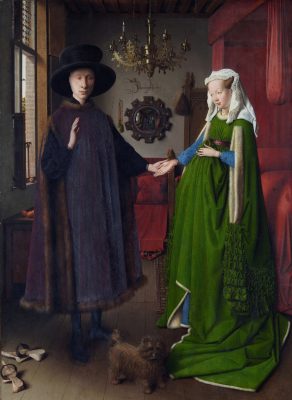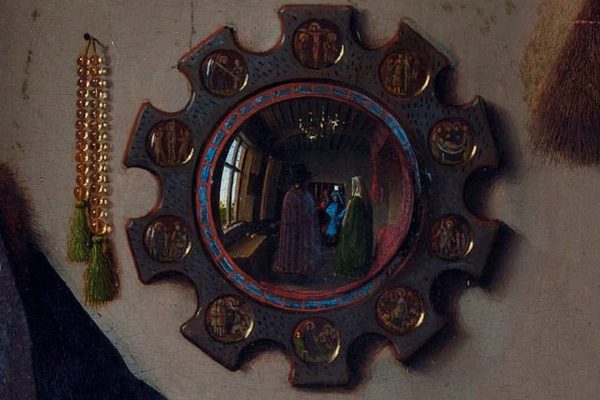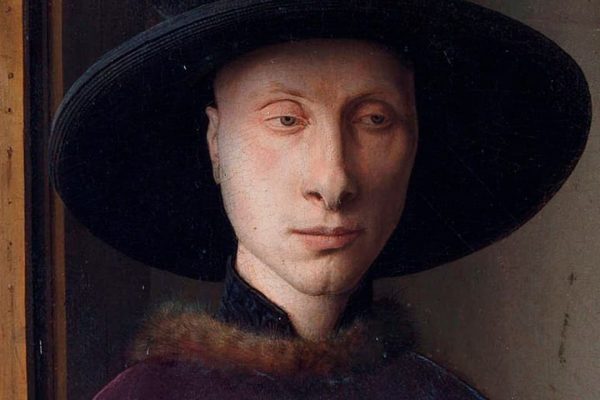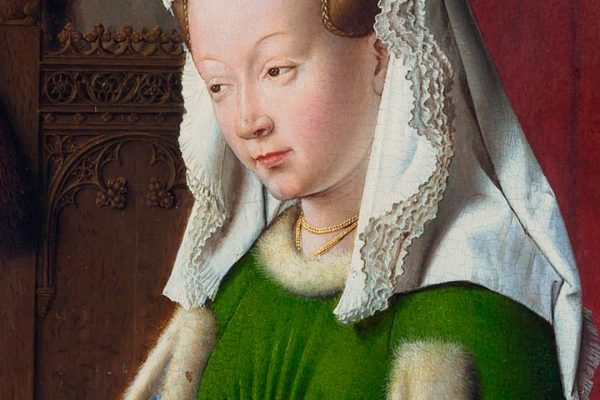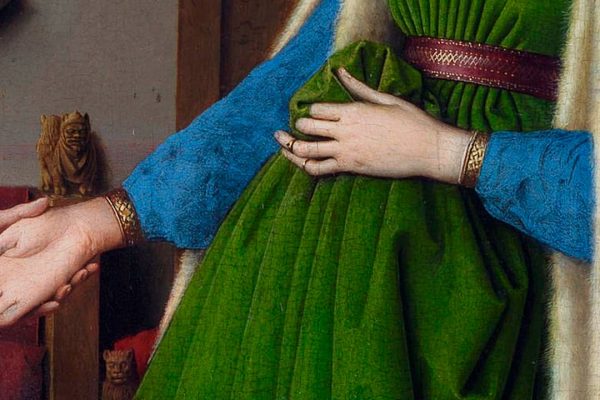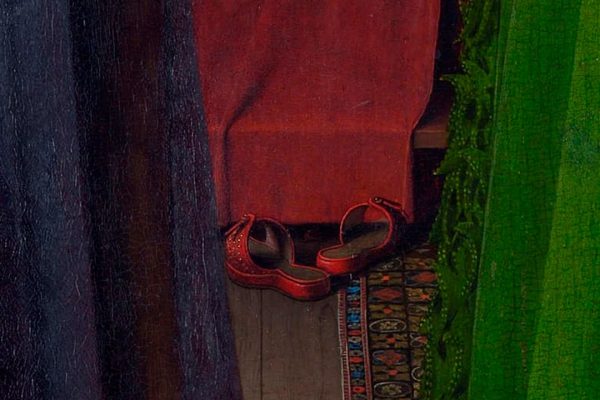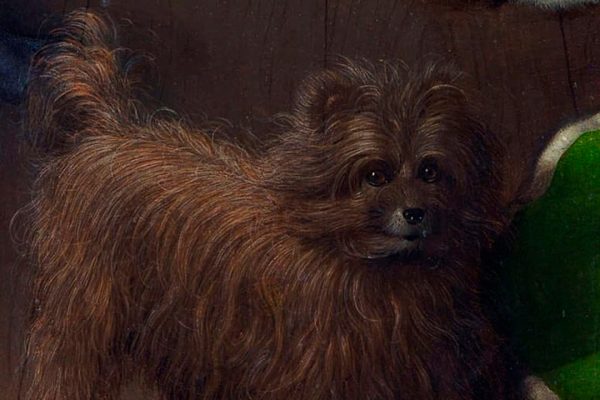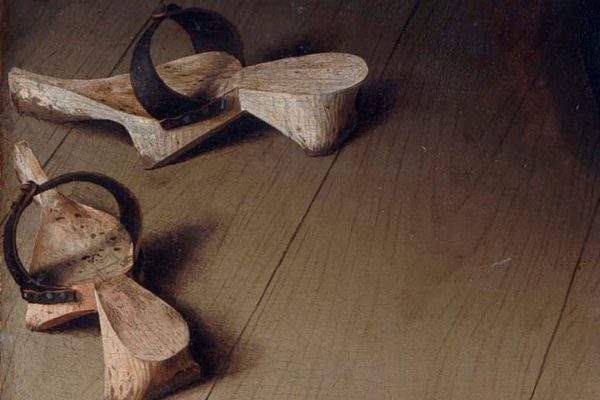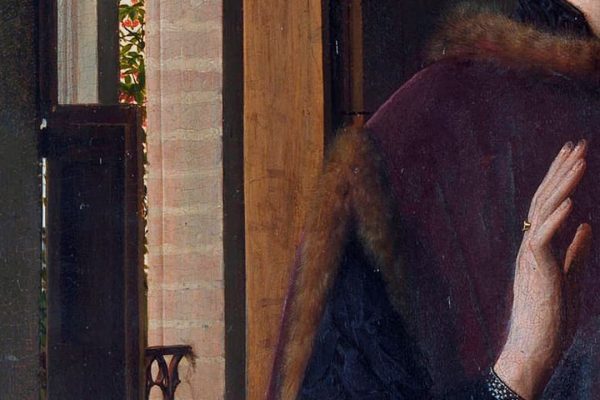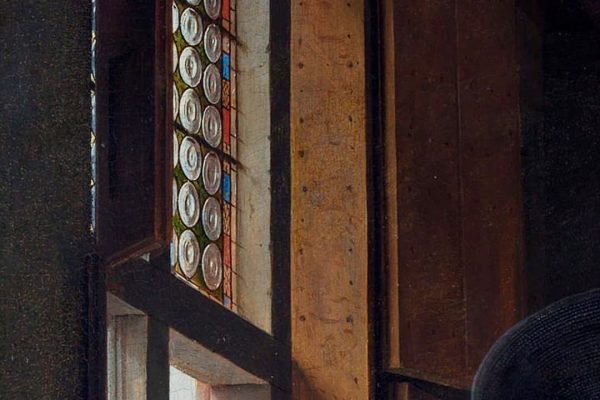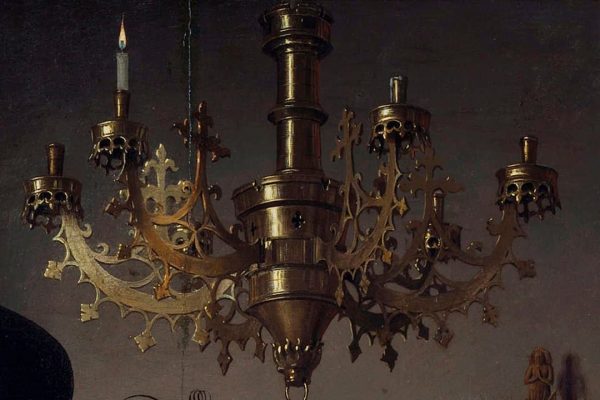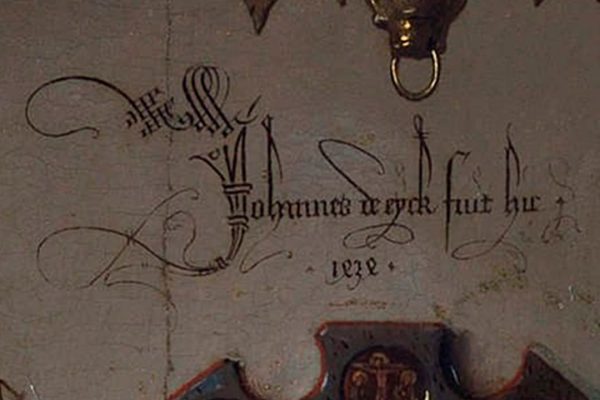Jan Van Eyck · Arnolfini Portrait
1434 – Oil on board – National Gallery, London
Despite being one of the most famous and studied paintings in the history of Western Painting, the “Arnolfini Portrait” is still a work full of mysteries to decode, a supreme masterpiece that has given rise to multiple debates among scholars and researchers.
First, it is not clear if the man in the portrait is Giovanni Arnolfini or his brother Michele, posing with his wife Elisabeth. The apparent state of pregnancy of the lady has also caused debate, since many experts think that such pregnancy does not exist, and that the female figure only reflects the ideals of beauty of the time. The curved mirror on the background -skilful mastery of perspective by Van Eyck- shows that -in addition to the portrayed couple- there are two other people in the room, one of them the painter. Even the inscription/signature on the wall, “Johannes de Eyck fuit hic. 1434. (Jan van Eyck was here. 1434.)” made some experts think that the male figure is a self-portrait of the painter, an option discarded by almost all contemporary scholars.
The painting is full of allegorical elements. Some experts have suggested that the mirror -featuring scenes from the Passion of Christ- represents the watchful eye of God, witnessing the wedding. The dog could be either a wedding gift of a symbol of loyalty. The fruits next to the window are also subject of debate. All in all, one of the most important Renaissance paintings ever created.
Text by G. Fernández, theartwolf.com
Follow us on:

